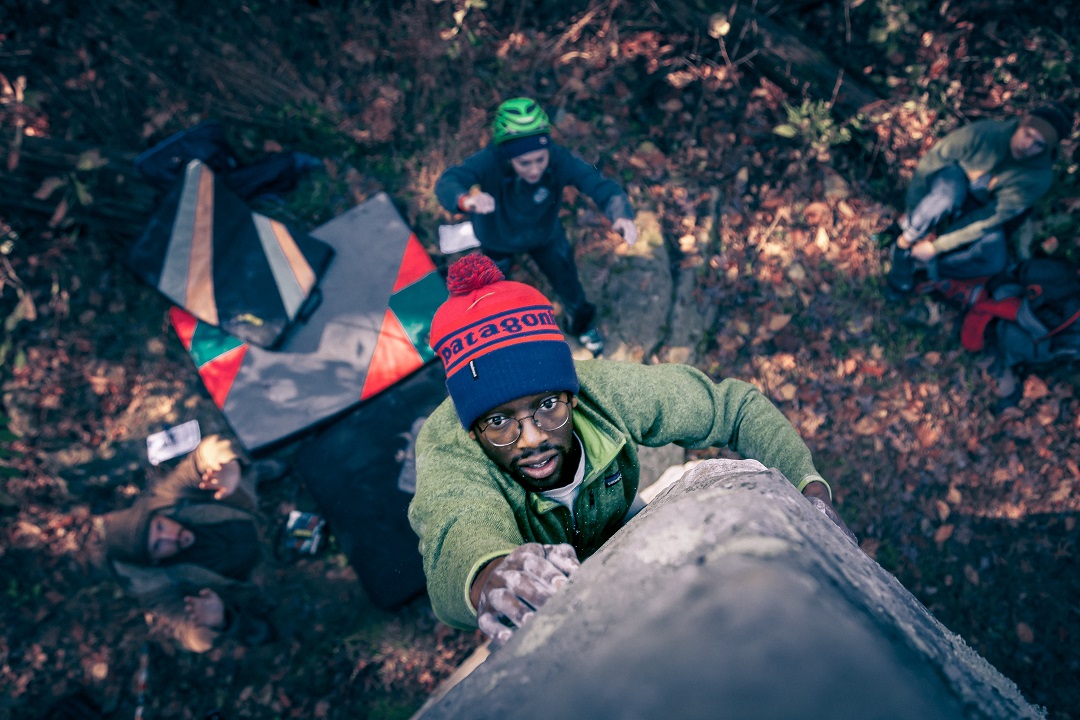Seeing a for sale sign at your local crag is a huge bummer, especially when its 300 developed problems daub some of the Midwest’s finest sandstone boulders. Yet, in 2012, the private farm where world-class climbing area Holy Boulders is located in southern Illinois hit the market.
Locally and nationally, climbers have long faced threats to their beloved sport. Defending climbing access is as age-old as it is multifarious: regulations, developments, maintenance, and conservation are all factors. While climbing ethics puts maintenance and conservation square in our individual responsibilities, it takes significantly more manpower and resources to tackle policies related to public lands or pocketbooks lining up to purchase the private ones.
Thankfully, we climbers have advocates.
The Illinois Climbers Association (ICA) is a nonprofit organization representing the climbers of The Land of Lincoln. Established in 2002, the organization acts as liaisons, land managers, conservation champions, grant administrators, fund raisers, bolt replacers, route setters, and policy advocates.
“ICA works to conserve and preserve our climbing areas and increase climber access,” said Phillip Carrier, president of the ICA board. “We think about access as anything that improves the climber’s experience. At Jackson Falls, we are re-bolting, which gives people access to safe climbing. In Giant City, we installed permanent anchors and bolts, providing more opportunities for climbers and conserving the clifftop environment.”
Including Jackson Falls and Giant City State Park, ICA has five major projects from Central to Southern Illinois.
Jackson Falls
With more than 400 sport climbing routes ranging in height from 30 to 70 feet, Jackson Falls has thousands of points of fixed protection to safeguard the thousands of climbers who grovel the southern Illinois canyon. Jackson Falls was first bolted in the 1980s, and ICA is addressing its aging hardware, replacing bolts and anchors with new, stainless steel upgrades — an immensely time- and resource-heavy task. Jackson Falls is located in the gorgeous Shawnee National Forest.
Giant City State Park
Climbers have taken to Giant City’s grip-friendly sandstone since the 1960s. The rock’s featureful and iron-rich composition presents a wide range of grades with a quick, five-minute approach. At the request of the park’s administrators, ICA began retro-bolting in 2017. With more than 60 sport routes, the park is embracing the comeback of climbers with its adaptation to sport climbing.

Holy Boulders offers 300 climbing problems in southern Illinois. (Antonio Jacob Martinez)
Holy Boulders
When climbers spotted for sale signs on the private property they’d grown to love — and had been given permission to climb for nearly a decade — they knew it could be the end of Holy Boulders. To forever “protect what’s holy,” the ICA solicited the support of the climbing community and the Access Fund, a national climbing advocacy group. In 2012, the Access Fund purchased 48 acres of the for-sale farmland. Four years later, Holy Boulders was transferred to ICA for long-term ownership and management.
Pere Marquette State Park
Characterized by vertical routes of short, limestone bluffs, Pere Marquette caters to beginner-to-intermediate climbers who don’t mind a panoramic view of the Missouri-Mississippi Confluence. After collaborating with the Illinois Department of Natural Resources to open public climbing here in 2016, ICA and dedicated volunteers transformed stones into steps, brush into trails, and bare rock into more than 70 routes. The quick jaunt from St. Louis expands opportunities for climbers in the region.
Alto Pass
Named for the southern Illinois town in which it is located, Alto Pass offers sport climbers and boulderers relatively short and shaded lines. With 35 total climbs, the small crag is popular with beginners because of its juggy sandstone routes and easy access via the Quetil Trail. In 2017, the ICA presented a proposal to the Alto Pass village board that resulted in opening climbing access to the public.
Where Carrier Climbs
“When we were working with the Access Fund to try to acquire the Holy Boulders property, I was spending a lot of time out there,” Carrier said. “Being with that piece of property from the beginning, I drew a connection to it.”
So much so that Carrier purchased his own slice of bouldering paradise — a parcel adjacent to Holy Boulders.
Carrier is through-and-through a fan of southern Illinois climbing for its sticky sandstone, route quality, and proximity to where he lives.
“I think we have exceptional quality climbing in Illinois,” he said. “It’s also my favorite because anything that is accessible within 15 minutes to an hour from where I live, is the best kind of climbing in my opinion.”
Author: Corrie Hendrix Gambill is a regular contributor to Terrain Magazine.
Top Image: Steven Frederick at Holy Boulders by Antonio Jacob Martinez.


Thanks for the photo credit and coverage of So. ILL. It’s Antonio Jacob Martinez., “Jaboc” sounds cooler. 🙂